Everything seems exaggerated at Proctor in France. Flavors are richer; the air smells of sea salt; academic work is intense, but focused in a few hours; day hikes are frequent, and then there's theater class, and music and art, and rugby and handball.....
Today started with a French history class that explored the French Revolution with specific attention to the ingredients of revolution, (inequity, ideology, a trigger event, etc.) with specific contrasts drawn to the American Revolution.
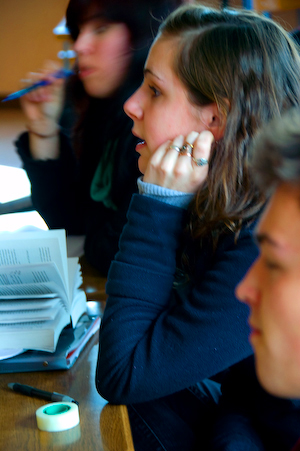
Next, we plunge into French Literature, and discussion of François Rabelais's epic Gargantua. Humanism and humor are themes that relate well to the Proctor experience! Next, a brilliant drama teacher breaks our team of ten students into pairs to rehearse and perform a simple skit, enriched with much passion and interpretation. This is the way to learn a language!
After a quick huddle, outlining the upcoming weekend, it's time to prepare a traditional French lunch at the Viandiers' apartment. Johnna and Duncan score six baguettes from a local boulangerie.
Everyone has an assignment for the repas. The menu calls for escargots, Vichissoise, salade, pan, fromages (chevre y camembert) and an outrageously decadent dessert called Mont Blanc.
Following the meal, it's time for an extended hike starting at the center of town. Pont l'Abbé is built on an estuary with Maine-like tides that flood a pool on the other side of the original bridge (in the background, below.) When the tide ebbed, the pool waters were released, powering granary mills in the buildings you see:

Ships sailed within a mile of the town, docked, and were pulled--by ropes--up to town, as if in a canal. We hike the pullpath toward the sea, through a rich wildlife refuge.
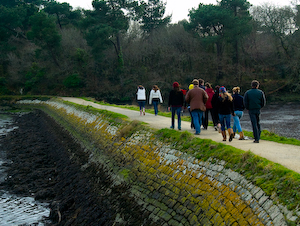
In the distance, we see the seaside town of Ile Tudy.
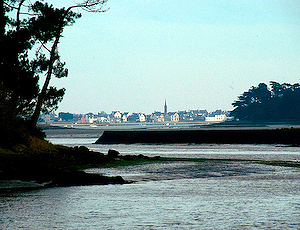
Our hike takes us through vine-covered scrub oak, rich holly and bay, ivy and gourse.
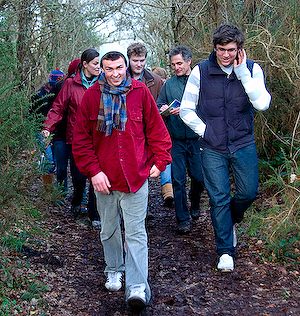
Much of France is a patchwork of farms and fields, but in remote Bretagne, the quilt is a tight, complex checkerboard of small plots divided by stone walls covered with earth and vegetation. The complexity of this pattern frustrated legions of would-be occupiers, including the Nazis. Local Bretons knew the lay of the land, but even the French national government was frustrated in its attempts to spawn large farm complexes in the 1960s. Observe the wall to the left of this typical farm lane.
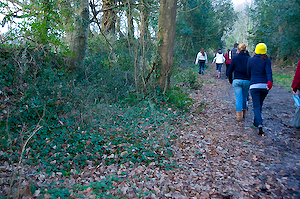
Now, with the erosion and associated environmental costs of large-scale agriculture, the small-plot system of Brittany is receiving belated, positive attention for its sustainable nature.





